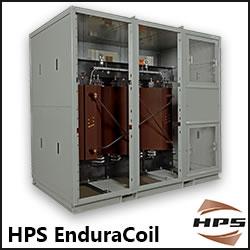Solar Power Driving the Next Global Energy Revolution
Solar power has evolved from early experiments to today's global energy driver. With PV, CSP, and emerging innovations like space-based solar, it's shaping a cleaner future. Falling costs, mega projects, and life-saving applications position solar as the backbone of tomorrow's energy.
If you think solar power is a modern innovation, think again. The story of harnessing sunlight stretches back thousands of years. Ancient civilizations used magnifying glasses to focus the sun's rays and start fires, long before the word "photovoltaics" ever existed. Fast-forward to the 1800s, and French physicist Alexandre-Edmond Becquerel discovered something extraordinary, he photovoltaic effect. He realized that sunlight could trigger an electrical current when it hit certain materials. By the 1880s, Charles Fritts built the first solar cell, and a few decades later, Bell Labs unveiled the first silicon photovoltaic cell in 1954. That breakthrough marked the true beginning of solar power as we know it.
Today, solar has become one of the most important pillars of renewable energy. But how exactly does it work, and where is it heading? Let's break it down.
How Solar Power Works
The sun is essentially a massive nuclear reactor. Deep in its core, hydrogen atoms collide and fuse to form helium, releasing unimaginable amounts of energy. This energy travels to Earth as electromagnetic radiation, what we simply call sunlight. Without it, life as we know it wouldn't exist.
Solar technology taps into that energy in two main ways: through photovoltaic (PV) systems and concentrated solar power (CSP).
This Report is Readily Available for Immediate Delivery | Download the Sample Pages of this Report@ https://www.precedenceresearch.com/sample/1574
Solar PV: The Everyday Workhorse
Photovoltaics are what most of us picture when we think about solar power, rows of shiny panels on rooftops or spread across fields. These panels are made up of many solar cells, usually crafted from silicon. When sunlight hits them, electrons are knocked loose and start moving, creating an electric current. This electricity flows as direct current (DC) and is converted into alternating current (AC) by inverters, so it can power everything from your laptop to an entire office building.
What makes PV so versatile is its scalability. It can power a simple calculator, provide energy for a single household, or be built into massive solar farms that supply electricity to entire communities. Homeowners can even feed their excess electricity back into the grid and earn credits through net metering programs.
CSP: Solar Power at Industrial Scale
While PV panels convert sunlight directly into electricity, concentrated solar power takes a different route. CSP uses mirrors to concentrate sunlight onto a receiver filled with a heat-transfer fluid. This heat can be used to make steam, spin a turbine, and ultimately generate electricity.
CSP projects are typically designed for large-scale energy production, such as solar power plants that can produce hundreds of megawatts annually. But CSP technology can also be applied on a smaller scale, think solar cookers in rural communities.
Active vs. Passive Solar Systems
Solar technology isn't just about high-tech panels and power plants. It also extends into the way we design our buildings.
- Active solar systems, like PV and CSP, use technology to generate energy directly.
- Passive solar systems, on the other hand, rely on smart design. For example, building materials like brick or stone can absorb heat during the day and slowly release it at night, helping to regulate indoor temperatures. Architects might use reflective roofs, solariums, or special window placements to make buildings more energy efficient without relying on mechanical systems.
Together, these approaches show how solar energy can be integrated into nearly every aspect of our daily lives.
The Future Is Bright
Solar power has already transformed how we think about energy, but the next chapter looks even more exciting. Around the world, governments, companies, and innovators are pushing the boundaries of what's possible:
- Policy and storage solutions are reshaping the U.S. market. With the Department of Energy and the Biden administration backing energy storage innovations, the goal is to make renewable power more reliable and accelerate decarbonization. In sunny states like California and Nevada, there's already so much solar capacity that it occasionally exceeds local demand.
- Mega projects are on the rise. India's Adani Green Energy recently commissioned a 1 gigawatt solar project in Gujarat, part of its plan to build 30 GW of capacity. Meanwhile, Europe is racing ahead with massive solar farms. UK-based Lightsource is developing a 560 MW solar park in Greece, set to become one of the largest in Europe.
- Solar saving lives. In parts of Africa, solar-powered refrigerators are helping store vaccines at safe temperatures, a critical tool in fighting diseases like malaria.
- Space-based solar power. In Japan, researchers are exploring ways to beam solar energy directly from orbit to Earth. If successful, this could revolutionize how we think about clean energy supply.
- Plummeting costs. Perhaps the most remarkable development is affordability. Over the past decade, the cost of solar has dropped by about 90%, making it one of the cheapest and most accessible renewable energy options available today.
Why Solar Matters
At a time when the world is racing to cut carbon emissions and secure sustainable energy, solar power is no longer just an "alternative." It's rapidly becoming the backbone of a cleaner energy future. From rooftops in suburban neighborhoods to giant solar parks in deserts, to futuristic ideas of space-based solar beams, the possibilities are endless.
The story of solar power is about more than technology, it's about resilience, creativity, and humanity's ability to reimagine its relationship with energy. The sun has always sustained life on Earth. Now, it's poised to power our future.
For questions or customization requests, please reach out to us @ sales@precedenceresearch.com | +1 804 441 9344
Featured Product

